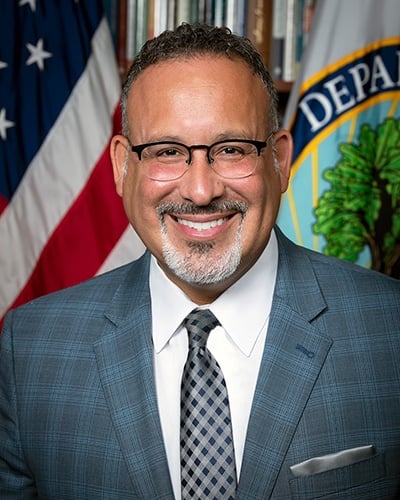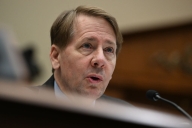You have /5 articles left.
Sign up for a free account or log in.

Health-care training programs at for-profits, as well as those at nonprofit and public colleges that award certificates, could once again be subject to federal gainful-employment regulations, which take into account students’ debt and earnings to determine if the programs are adequately preparing students for the workforce.
SDI Productions/iStock/Getty Images Plus
When the Obama administration released its plans to measure whether some graduates were gainfully employed, Katy Perry’s “California Gurls” was the top song on the radio, Apple was on its fourth iPhone and for-profit chains ITT Technical Institute and Corinthian Colleges were still enrolling students.
Nearly 13 years later, former president Obama’s vice president is gearing up to release his own version of gainful employment regulations this month. Higher education lobbyists and analysts expect the proposed rule to be tougher than the one the Obama administration ultimately put into place, leading to more programs failing—and possibly losing their access to federal financial aid.
The issue, which has become a perennial political football, measures whether programs at for-profit institutions as well as nondegree programs in any sector are preparing students for employment—largely by looking at a students’ debt load and earnings.
The rule—finalized in 2014—was a key part of the Obama administration’s efforts to hold for-profit colleges accountable, though only one year of data was ever released. Former education secretary Betsy DeVos stopped enforcing the rule and scrapped it altogether in 2019.
Still, the decade-old notion and a 2014 policy that was never fully carried out have continued to leave a mark on higher education, from the federal data available on programs to the conversations about how to measure the value of a college degree. Before the gainful conversations, program-level earnings and debt data didn’t exist.
“Before, schools had to use their best guess about which programs were working and which weren’t,” said Clare McCann, a higher education fellow at Arnold Ventures, a philanthropy, who previously worked in the Education Department during the current administration. “Students had to use their best guesses about which programs would pay off and which wouldn’t, and then suddenly—through gainful employment and then later through the College Scorecard—all of those numbers became very real.”
‘In the Bloodstream’
The gainful employment policy discussions put a focus on employment outcomes of graduates, McCann said.
“[Gainful employment] was foundational to getting all of higher education to think more realistically and concretely about what they were providing to students,” she said.
That effort also has informed conversations over the last decade about how to measure the value of a college education. Regulators from accreditors to states, researchers and journalists have started using data on debt and earnings to evaluate programs, she said.
“This is much more in the bloodstream of higher education now than it ever has been.”
Several higher education think tanks and student advocates have urged the department to use the final gainful-employment metrics as the basis for identifying programs that provided a low financial value to students. The department is currently working on a plan to create an annual list of the low-value programs, which would include those from all sectors, not just those covered by gainful employment.
Higher education associations don’t like the idea of the low-value list and have argued that one data point can’t measure the value of postsecondary education. For-profit colleges tend to agree, though the main lobbying group representing the sector has argued that all programs should be held to the same standard.
“Boiling the value of higher ed [down] to one or two metrics is shortsighted and misses a lot,” said Nicholas Kent, chief policy officer for Career Education Colleges and Universities, which represents for-profit colleges.
CECU challenged the first two versions of the rule in court, winning the first lawsuit and losing the second.
“If there is a gainful-employment rule that is fair and equitable, we would be happy to live with it,” Kent said. “We’re happy to see the department moving in the direction of at least being more transparent with all sectors’ data, but to only be transparent with certain data and then hold certain institutions responsible for poor outcomes seems pretty shortsighted. It does seem more politically motivated than good public policy.”
Other higher education associations supported the 2014 rule and urged the Trump administration not to rescind it.
Advocates say a strong gainful-employment rule would be an important accountability measure, and they brush off suggestions that changes in the for-profit sector make such a rule unnecessary. The industry has shrunk since the first batch of gainful-employment regulations were proposed, though for-profits still received about 10 percent of the financial aid doled out this academic year.
“What I’ve learned from that is you have to remain vigilant,” said Bob Shireman, a senior fellow at the Century Foundation who worked in the Obama administration and was involved in the early discussions about gainful employment. “The idea that somehow the genetics of for-profit higher education has changed, it’s just not the case. The genetics are still more hazardous than public and nonprofit.”
2014 Rule Effects
Gainful-employment regulations cover programs at for-profit institutions as well as nondegree programs in any sector, which make up a quarter of all postsecondary programs, according to Education Department data. Those programs are required to prepare students for “gainful employment in a recognized occupation,” according to federal law.
The term “gainful employment” has existed in federal law for decades, but it wasn’t defined until the Obama administration. Under the 2014 rule, a program was considered failing if a student’s annual loan payments were more than 20 percent of their discretionary income or 8 percent of their annual income.
That first policy, released in July 2010, ultimately was tossed out by a federal judge because the administration didn’t provide enough justification for the thresholds it used. The Obama administration persisted and released new regulations in 2014. About one-tenth of programs would’ve failed the gainful test, according to data released in 2017. (If programs failed in two out of three consecutive years, they could lose their access to federal student aid.)
Shireman said the goal of gainful employment was to improve programs, and that some colleges and universities have used the measures to evaluate their offerings.
“When the last rule was going into effect, we were already beginning to see institutions paying more attention to the tuition that they were charging and considering making adjustments in their programs,” he said. “I think sometimes colleges are surprised to discover they’ve got a focused job training program and then students are not getting jobs. That suggests that there’s something that’s not working as intended.”
Robert Kelchen, now a professor and head of the educational leadership and policy studies department at the University of Tennessee at Knoxville, found in a 2019 study with Zhuoyao Liu, then a doctoral student at Seton Hall University, that programs that passed the gainful-employment test were less likely to close than those that failed.
Michelle Dimino, the deputy director of education at Third Way, a think tank that supports strong gainful-employment regulations, said she expects to see a similar reaction when the new rule is released.
“What we saw [in 2017] was that a lot of programs that would fail under those different metrics ended up closing,” Dimino said. “The schools used that as an indicator that these were not high-quality programs, and they weren’t meeting the bars for effectiveness, and they shut them down on their own authority. Knowing what these measures are and how they impact different programs, we’ll see some changes in how schools are thinking about their current offerings.”
Dimino said that conversations about the return on investment in higher education have increased as costs and student debt loads have risen rapidly and students are increasingly asking whether the investment is worth it.
“We know that finances are a really important part of considering where or whether to go to college,” she said. “Gainful helped advance that conversation by putting some metrics in detail of how we can evaluate programs, cost and quality in a way that helps us to see which programs should be receiving federal dollars and where we need their conversation about the value of others.”
Dimino said gainful employment is just the beginning of a conversation.
“[Gainful employment] is not a cure-all for how we pay certain industries in the fields that people can feed into,” she said. “It’s not going to fix everything in the system. It’s still essential that we make sure that we have this rule in place so that students are not going and putting their hard-earned dollars or taxpayer dollars into programs that don’t have any payoff for them.”

A New Gainful Era
The Biden administration’s forthcoming rule is expected to be similar to what the department proposed last spring. That proposal included two metrics to gauge whether a graduate was gainfully employed: the debt-to-earnings ratios from the 2014 rule and a high school earnings threshold.
Under the high school earnings threshold, graduates or completers would need to make more money than an adult who didn’t go to college in order for the program they graduated from to remain eligible for federal financial aid. The earnings thresholds would be based on Census data and vary by state. Nationally, the median high school graduate earned about $36,600 in 2020, according to federal data.
Stephanie Cellini, a professor of public policy, public administration and economics at George Washington University, said the high school earnings threshold is a low bar for programs but one that is intuitive for students to think about.
“If the sector or if the programs and institutions have changed and improved, then they should not be worried about gainful employment,” Cellini said.
Cellini, who has researched student outcomes in the for-profit sector and written about the threshold concept, said additional accountability is needed.
“There’s a huge incentive to enroll those students, and there’s very little incentive to ensure student success on the back end,” she said. “It seems that there just needs to be additional incentive for institutions to ensure value for students. There’s a lot of money at stake here, and it’s students’ lives.”
Department data showed that about 13 percent of for-profit certificate programs that have more than 30 completers or graduates would fail under the debt-to-earnings ratio, while about 65 percent those programs wouldn’t meet the earnings threshold. About one-third of private nonprofit certificate programs with more than 30 completers or graduates and 18 percent of public certificate programs would fail under the earnings threshold. (The majority of programs covered by gainful employment don’t have enough students to report debt and earnings data and would automatically pass the test.)
Groups representing cosmetology schools have told the Biden administration the 2022 proposal would decimate the industry.
McCann said she hoped a stronger gainful-employment rule would incentivize the for-profit industry to stop providing low-value programs and ensure they are providing programs that can pass the two tests, which she described as “very low bars.”
“I think it’s safe to say these rules are designed to be fairly bulletproof in terms of making sure when a program is shut down, it is actually a low-value program,” she said. “There are lots of other pretty low-value programs that will probably be able to pass these tests and keep operating. This is really about the worst of the worst, the lowest value of all the programs in the field.”
McCann said the earnings threshold would address a flaw in the 2014 rule that allowed low-wage programs to pass.
“In reality, gainful employment requires that graduates are better off as a result of having attended the program,” she said.
Kent, with CECU, said the high school earnings threshold makes sense, but the department’s proposed comparison group is “inappropriate.” That’s because the earnings of students in their early 20s will be compared to median earnings of high school graduates between the ages of 25 and 35. Instead, the department should compare the earnings to those of high school graduates ages 18 to 24, he said.
The negotiators didn’t reach consensus on the proposed regulation, so the department is free to propose whatever it wants, though the draft regulations will be subject to public comment. Negotiators representing the four-year and two-year college sectors joined for for-profits and voted against the proposal.
Kent took issue with the administration’s proposal over all and how the department approached the rule-making process for gainful employment. Previous administrations have convened a committee to look specifically at gainful employment, but in the most recent round, one committee was tasked to review policies for gainful employment, financial responsibility, the 90-10 rule, changes in ownership and other topics.
“Gainful employment is a huge rule with real-life consequences,” Kent said. “The Obama and Trump administrations recognized that. At the end of the day, gainful employment only got a few hours over the course of three months.”
Kent said that if the proposed regulations are similar to the spring 2022 proposal, that will be disappointing, given all the concerns CECU and other groups have voiced over the last year.
“They’re kind of ignoring those concerns, and they’re going to forge ahead with a framework that looks pretty much identical to what we ended up with in terms of a negotiated rule making,” he said.








